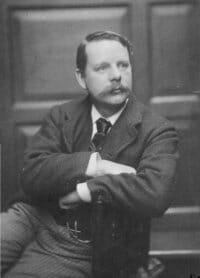Story Types – Distinctions Between Allegory, Fable and Satire
 A Merging in Story Types Using Allegory, Fable and Satire
A Merging in Story Types Using Allegory, Fable and Satire
When using allegory, fable and satire story types, there are no concrete boundaries. Although distinct in nature, any one of the types can be merged with one or more of the other types. Writing is a magnitude of perspective. Every story, science fiction, fantasy, horror or contemporary springs forth from the mental lens of the author. Please do not bind yourself into the specifics of any one of the following three story types.
Story crafting is about using allegory, fable and satire as well as many other types of writing with a purpose of sharing a tale from within your own mind. In fact, writers seldom apply conscious use of any particular distinction in story types. It’s really about telling an interesting and engaging story while making use of all the necessary tools of the trade.
So get real. Come up with a fresh story line. View it from a different perspective and a different mindset. And make your characters bring forth a treasure worthy of your reading audience.
Herein are some of the distinctions in story types as pertaining to allegory, fable and satire.
Story Types, Allegory
When components with a story induce both literal and secondary levels of thought and meaning, we typically define those aspects of the tale as allegory writing. As such, the second level often engages a historical or political tone wherein the characters tend to represent historical figures or near to. In allegory story types, the characters may also be more of amalgamation of what that the implied historical person represents, rather than a physical similarity to any specific historical personality.
 For example in the book “Farewell to the Master” by Harry Bates, but perhaps better known by the screenplay title of “The Day the Earth Stood Still,” the alien superhuman lead character goes by the name Carpenter. This brings to mind a great historical figure extraordinary abilities, a carpenter by the name of Jesus Christ. In following the similarities through the book, readers cannot fail to grasp the links between death and a resurrection and the clear statement of deadly consequences associated with humanities refusal to resist evil. The call is that we follow a one and only correct path.
For example in the book “Farewell to the Master” by Harry Bates, but perhaps better known by the screenplay title of “The Day the Earth Stood Still,” the alien superhuman lead character goes by the name Carpenter. This brings to mind a great historical figure extraordinary abilities, a carpenter by the name of Jesus Christ. In following the similarities through the book, readers cannot fail to grasp the links between death and a resurrection and the clear statement of deadly consequences associated with humanities refusal to resist evil. The call is that we follow a one and only correct path.
Thus we see how useful allegory can be in driving home a specific point. Symbiotically identifying story characters to actual historical figures gives the lesson a more authoritative slant. This illustrates that such happenings are not only possible, but that they have actually in some form or another already taken place. The author takes advantage of three simple points:
History is a loop
What is old is new again
AND Nothing that happens that has not had some parallel in the past.
Story Types, Fable
Among the most common of story types, a fable typically uses animal characters to blend allegory into an illustration of proper moral behavior. Perhaps among the greatest known examples of this story type, Aesop’s Fables reaps a FREE ready-to-read home in the site pages of the U.S. Library of Congress. Check it out.
In science fiction, fantasy and horror writing strict fable story types are not so common. We get flavors of fables mixed with a little something else:
Sometimes an animal-type cast with a few humans
Sometimes animal-types cast with humanesque creatures standing in(think orcs,elves,trolls)
This is not cheating or less of a fable than those illustrated via the likes of Aesop’s Fables. It is simply a different take on the old biblical derived fables.
Story Types, Satire
The satire story type sets focus on the ridicule of various particular subject matter. Often perceived as a form of comedy writing, satire typically seeks to induce a chuckle from the reader.
For instance “Bored of the Rings” is a spoof of “Lord of the Rings”. It is also satire on the evil of a group in power, and the in vogue evil of the day. It shows that there is always a manufactured boogieman if someone needs there to be one. You can see many similarities between the people in charge at the time of its writing and the characters in the book.
[amazon_link asins=’0618640150,0345538374,B009F1DIOK’ template=’ProductGrid’ store=’rmharrington-20′ marketplace=’US’ link_id=’e7fb7cb1-4321-11e8-8644-7939abdf5a33′]
Satire, one of the oldest forms of comedy, easily merges with science fiction, fantasy and horror plot lines. After all: sci-fy already tends to care a somewhat dark pace such that marriage of the two may come naturally. It helps that the average sci-fy, fantasy and horror reader is somewhat lent to close examination of those in charge. This demographic responds well to satirical content.
Story Types – Allegory, Fable and Satire – Closing Remarks
These different types of stories sometimes blur the line between each other. We can argue for days on what is or is not a fable versus what is or is not an allegory and or a satire. Truth is, every story tends to incorporate some components of each style. Also, any story may not be typed as either of the story types. It is all in the eyes of the beholder.
[amazon_link asins=’1521777810,0691151806,B009UTESB4′ template=’ProductGrid’ store=’rmharrington-20′ marketplace=’US’ link_id=’9de8712b-4324-11e8-9008-bd60f9169f15′]
Don’t get too caught up in titles or labels. Strive to understand the types of literature and the associated purpose of usage. Know how to analyze the distinctions. Such an approach will serve you well in your labor to produce memorial tales in the world of horror, science fiction and fantasy.
Reading comprehension matters most. Making your points clear and with authority supersedes any type of labels that society may wish to get you caught up in.
